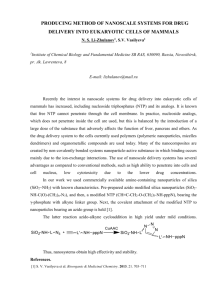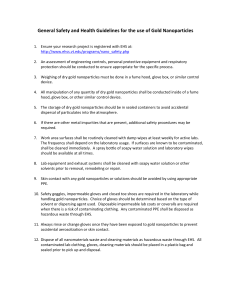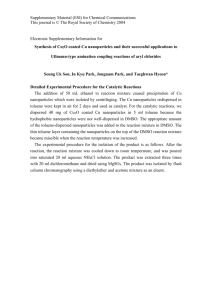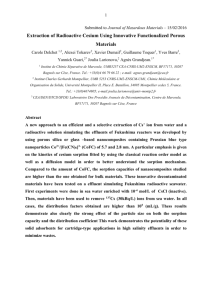Polymer Supported Inorganic Nanoparticles as Hybrid
advertisement
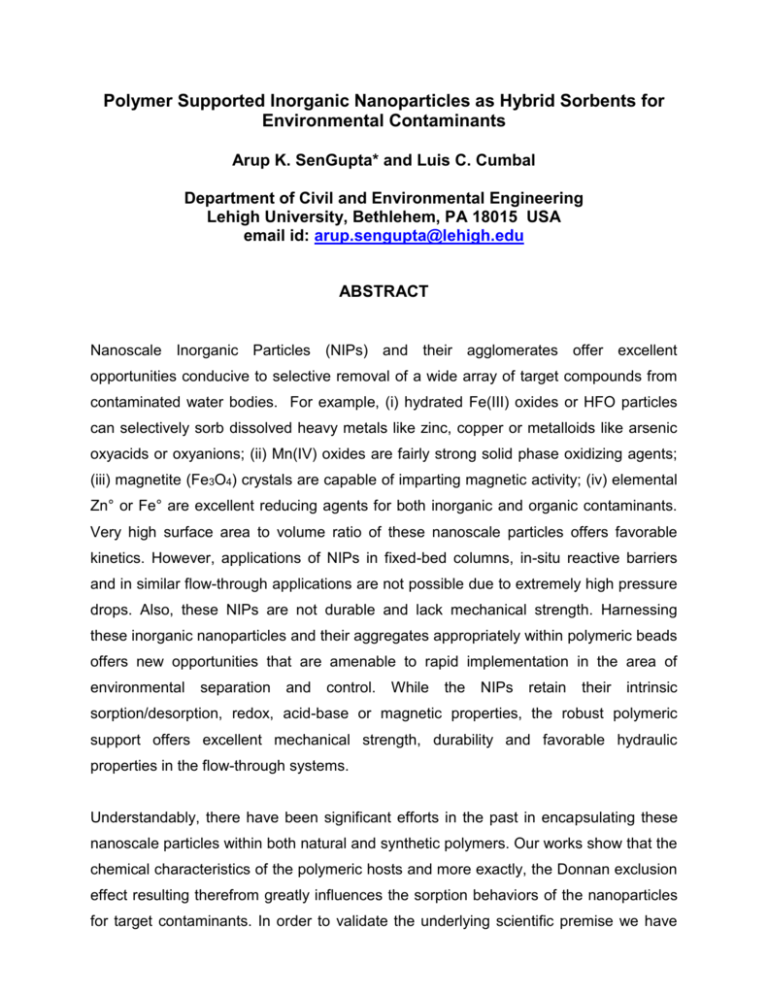
Polymer Supported Inorganic Nanoparticles as Hybrid Sorbents for Environmental Contaminants Arup K. SenGupta* and Luis C. Cumbal Department of Civil and Environmental Engineering Lehigh University, Bethlehem, PA 18015 USA email id: arup.sengupta@lehigh.edu ABSTRACT Nanoscale Inorganic Particles (NIPs) and their agglomerates offer excellent opportunities conducive to selective removal of a wide array of target compounds from contaminated water bodies. For example, (i) hydrated Fe(III) oxides or HFO particles can selectively sorb dissolved heavy metals like zinc, copper or metalloids like arsenic oxyacids or oxyanions; (ii) Mn(IV) oxides are fairly strong solid phase oxidizing agents; (iii) magnetite (Fe3O4) crystals are capable of imparting magnetic activity; (iv) elemental Zn° or Fe° are excellent reducing agents for both inorganic and organic contaminants. Very high surface area to volume ratio of these nanoscale particles offers favorable kinetics. However, applications of NIPs in fixed-bed columns, in-situ reactive barriers and in similar flow-through applications are not possible due to extremely high pressure drops. Also, these NIPs are not durable and lack mechanical strength. Harnessing these inorganic nanoparticles and their aggregates appropriately within polymeric beads offers new opportunities that are amenable to rapid implementation in the area of environmental separation and control. While the NIPs retain their intrinsic sorption/desorption, redox, acid-base or magnetic properties, the robust polymeric support offers excellent mechanical strength, durability and favorable hydraulic properties in the flow-through systems. Understandably, there have been significant efforts in the past in encapsulating these nanoscale particles within both natural and synthetic polymers. Our works show that the chemical characteristics of the polymeric hosts and more exactly, the Donnan exclusion effect resulting therefrom greatly influences the sorption behaviors of the nanoparticles for target contaminants. In order to validate the underlying scientific premise we have dispersed hydrated Fe(III) oxide or HFO nanoparticles, within cation exchangers, anion exchangers and nonionized polymeric sorbents and investigated the sorption behaviors of the resulting materials. This study led to the development of a highly arsenic-selective hybrid sorbent that is amenable to efficient regeneration and reuse. Both equilibrium and kinetic data to this effect will be presented. These polymeric-inorganic hybrid materials, thus produced, can selectively and simultaneously remove a wide array of target trace contaminants, namely, arsenates, chromates, perchlorates, arsenites, and uranium(VI). Key Words: Nanoparticles, ion exchange, hybrid sorbents, arsenic, perchlorate
